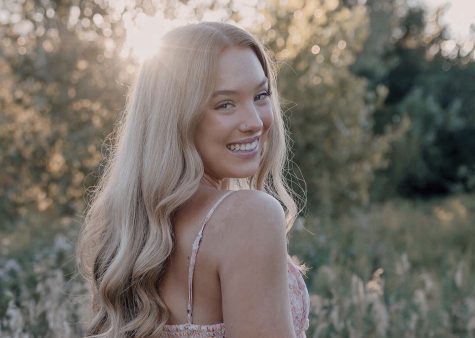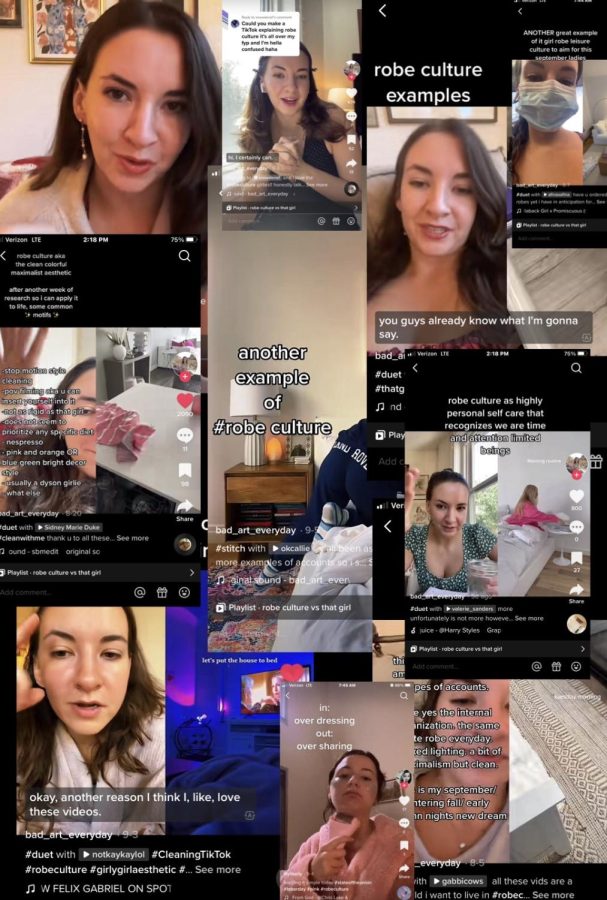Robe culture builds a lifestyle not an aesthetic
I don’t wake up at 5:00 am.
In fact, I’ve never been able to rise any earlier than 6:15.
I much prefer to consume my avocado in guacamole form rather than on toast.
And, first-hour yoga class is the closest I’ve gotten to anything resembling pilates.
In other words, I am not “that girl.”
Despite my best efforts to formulate my life in a way that’s not only organized and healthy but also aesthetic, I seem to fall a few inches short of being worthy of the “that girl” title.
These expectations of being “that girl” originate from a TikTok trend back in April of 2021, and yet, it still infiltrates my For You page to this day. Don’t get me wrong; on occasion, I find the 30-second clip motivating, or at the very least, satisfying. However, the overarching feeling that lingers well after I’ve scrolled past the video is disappointment in my own day-to-day lifestyle.
That was until I came across “robe culture.” On the surface, this may seem like the knock-off version of “that girl,” but in fact, she is actually just the more obtainable depiction of the original TikTok trend.
While before, I was being shown a select view of ten-second highlights gracefully strung together to make the optimal video, now I see “robe girls” focusing on motivating people to organize one aspect of their life at a time.
Whether that’s setting aside an extra 15 minutes at the end of the night to clean your room or making a to-do list every morning, “robe girls” aren’t striving for perfection, but rather finding ways to make their life more manageable on the day-to-day.
The actual definition of “robe culture” is being attuned to what you need at the moment and doing what’s possible at the time to help yourself. The main difference between this and “that girl” culture is that it’s a lifestyle that’s particular to you rather than a one-size-fits-all aesthetic.
Of course, like most social media-inspired trends, even the best-intentioned ones still seem to be forced into a box of expectations. In spite of the fact that “robe culture” is not supposed to be specific to one type of person, many creators have agreed that the overall aesthetic that is typically associated with “robe culture” is colorful and minimalistic.
This is mostly because you can be intentional with the items you bring into your space. With minimalism, you’re not being overwhelmed by a 20-step skincare routine or a million trinkets that take up space, but rather, you have a white background with a few carefully selected and well-loved colorful items specific to your personality.
However, if you are a maximalist who loves a neutral or dark color palette, that’s okay too. The exceptional part of “robe culture” is that the mold is flexible and bends to you and your needs, not the other way around.
Tiktok trends fluctuate so quickly that it’s likely “robe culture” will be gone in the next couple of months; that being said, it is important to take away snippets of positive, motivational, and calming priorities from each trend. Otherwise, there is no point in the hours we spend scrolling. “Robe culture” is the perfect opportunity to take something uplifting from social media rather than the negative connotation it usually receives.

Allie Beaumont is a Senior on The Central Trend. She is entering her fourth and final year on staff and could not be more excited. This year she received...




























































































Nat Mix • Sep 15, 2022 at 2:36 pm
Allie Beaumont! I loved this! You are killing it miss girl